The striker is the most scrutinized role in football. Goals define games, and strikers are often judged almost exclusively by their scoring numbers. Yet, modern football demands far more than just finishing ability. The striker is not only the spearhead of the attack but also the first line of defense, the connector in positional play, and the reference point for stretching or holding the opposition back line.
When scouting strikers, it is therefore critical to go beyond the surface of “goals scored” and assess the specific competencies that allow them to contribute across phases of play. This article will examine the key areas that define the modern striker, considering both lone forwards in systems like the 4-2-3-1 and striker pairings in systems such as the 3-5-2 or 4-4-2.
The Tactical Context of Strikers
Strikers operate differently depending on the team’s structure. A lone striker in a 4-2-3-1 must cover more ground, combining target-man play, link-up ability, and pressing work often on their own. By contrast, a front two in a 3-5-2 or 4-4-2 distributes the workload: one may focus more on running in behind, while the other occupies defenders with hold-up play.
Understanding the tactical system is essential when evaluating a striker. The same player who thrives as a partner in a front two might struggle in isolation as a single reference point, and vice versa. Scouting must always begin by asking: what role is this striker expected to play in our system?
Pressing Ability: The First Line of Defense
Modern football places enormous value on out-of-possession work. For strikers, pressing ability is not simply about running hard, but about pressing intelligently:
- Trigger recognition: Knowing when to jump, such as on a poor first touch by a center-back.
- Body orientation: Cutting off passing lanes while pressing to guide play into pressing traps.
- Synchronization: Coordinating with wingers and midfielders to maintain compactness.
For example, Roberto Firmino at Liverpool was a master of pressing from the front, constantly curving his runs to block passing lanes while chasing down defenders. A striker who presses chaotically can actually harm the team’s defensive structure, whereas one who presses with purpose can set the entire team up for regaining the ball in advanced zones.
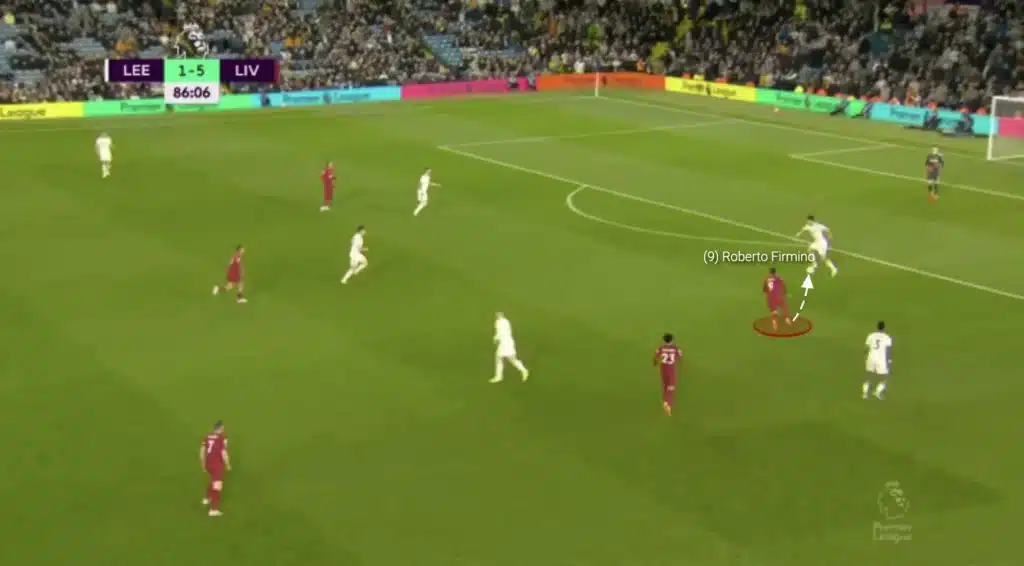
Scouting tip: When analyzing video, pay attention to how the striker positions themselves when the opposition builds from the back. Are they cutting off central access or leaving gaps? How often do their presses result in recoveries in the attacking third?
Goal Scoring Ability: The Defining Attribute
While modern football requires multifunctional strikers, their ability to score remains paramount. Goal scoring ability includes:
- Movement inside the box: Timing runs between defenders, peeling off the back shoulder, or attacking the near post.
- Shot selection and efficiency: Understanding when to strike first-time, when to take a touch, and choosing high-probability shooting positions.
- Consistency: Converting expected goals (xG) at or above league average.
Cristiano Ronaldo’s movement in the penalty area is a textbook example: scanning constantly, adjusting runs based on the crosser’s body shape, and attacking space a split second before defenders react. Similarly, Erling Haaland thrives on maximizing simple, high-quality finishes through intelligent positioning rather than spectacular attempts.
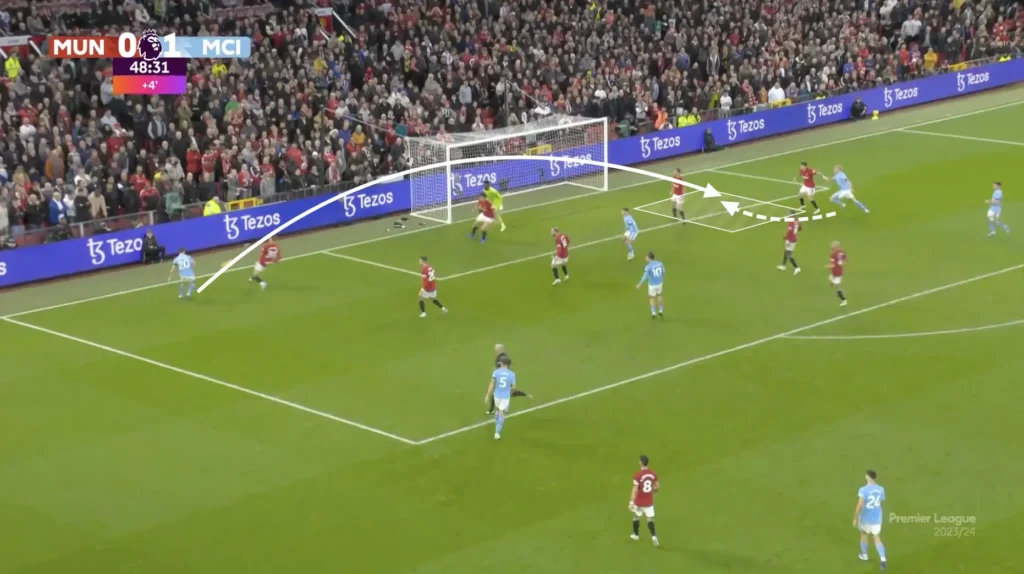
Scouting tip: Go beyond raw goal numbers. Look at shot maps, xG per shot, and clips of box movement. The best strikers create “easy goals” by mastering positioning rather than relying on low-percentage efforts.
Ball-Playing: Linking Play in Positional Structures
Not every striker is tasked with dropping deep, but those who can contribute to build-up provide a valuable extra layer to a team’s positional play. Ball-playing involves:
- Receiving under pressure: Dropping into midfield pockets, holding off defenders, and playing first-time layoffs.
- Distribution: Spreading play wide to advancing fullbacks or wingers.
- Rotation: Temporarily swapping positions with attacking midfielders to destabilize defensive lines.
Karim Benzema’s evolution at Real Madrid illustrated this quality perfectly. He frequently dropped into midfield to link play, drawing defenders out of position and creating space for runners like Vinícius Júnior or Rodrygo to exploit.
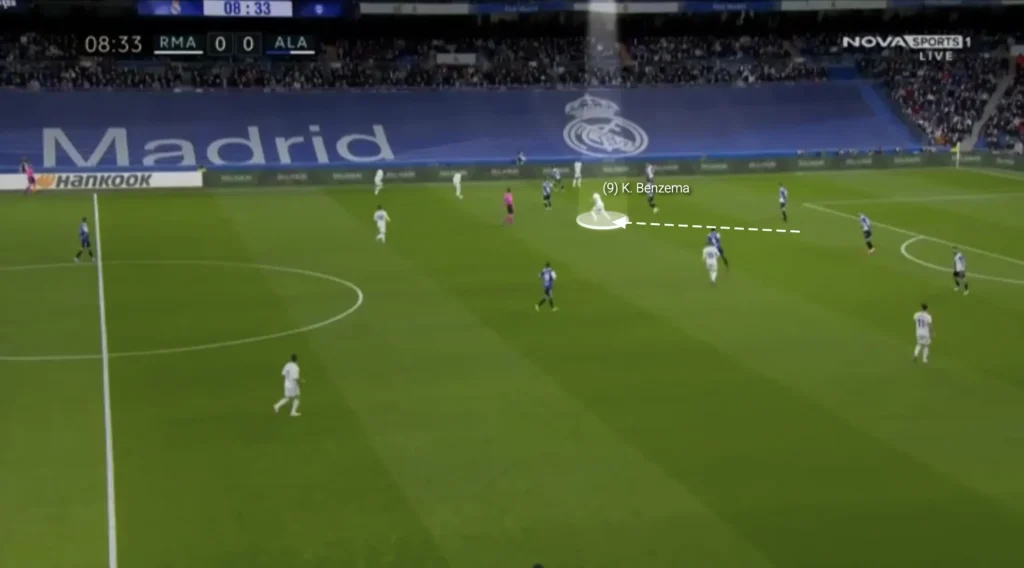
Scouting tip: Assess not only whether the striker can pass, but where and how they pass. Are they secure in tight spaces? Can they switch play effectively? Or are they limited to short, back-to-goal lay-offs?
Running in Behind: Stretching Defenses
A striker who threatens the space behind the defense forces the opposition to defend deeper, opening midfield spaces for teammates. Key qualities here include:
- Timing of runs: Avoiding offside while maximizing separation from defenders.
- Variety of movement: Curved runs, diagonal sprints across the back line, or straight vertical bursts.
- Acceleration and top speed: The physical tools to capitalize on through balls.
Nico Williams and Lamine Yamal perfectly demonstrate this quality for Spain. Their sharp, well-timed runs behind the defensive line not only generate direct scoring chances but also stretch opposing defenses, creating valuable space for teammates to exploit.
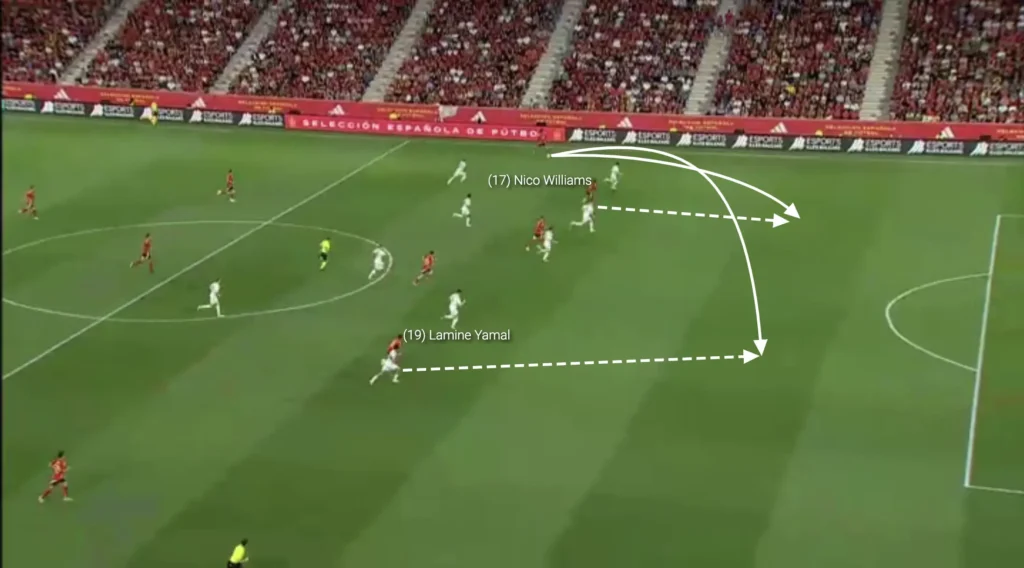
Scouting tip: Review sequences where the team transitions quickly. Does the striker immediately look to exploit depth? Are their runs coordinated with the ball carrier’s cues?
Target Man Play: Holding Up and Bringing Others In
For teams that play more directly, or when a striker operates as part of a pair, target-man qualities are vital. This involves:
- Aerial duels: Competing effectively against center-backs in long-ball situations.
- Hold-up play on the ground: Receiving under pressure, shielding the ball, and waiting for support.
- Second-ball contribution: Redirecting headers or layoffs into dangerous areas.
Chris Wood has built an entire career on excelling in this domain. He may not run in behind constantly, but his ability to secure the ball and create for runners makes him invaluable, especially in systems where midfielders and wide players surge forward.
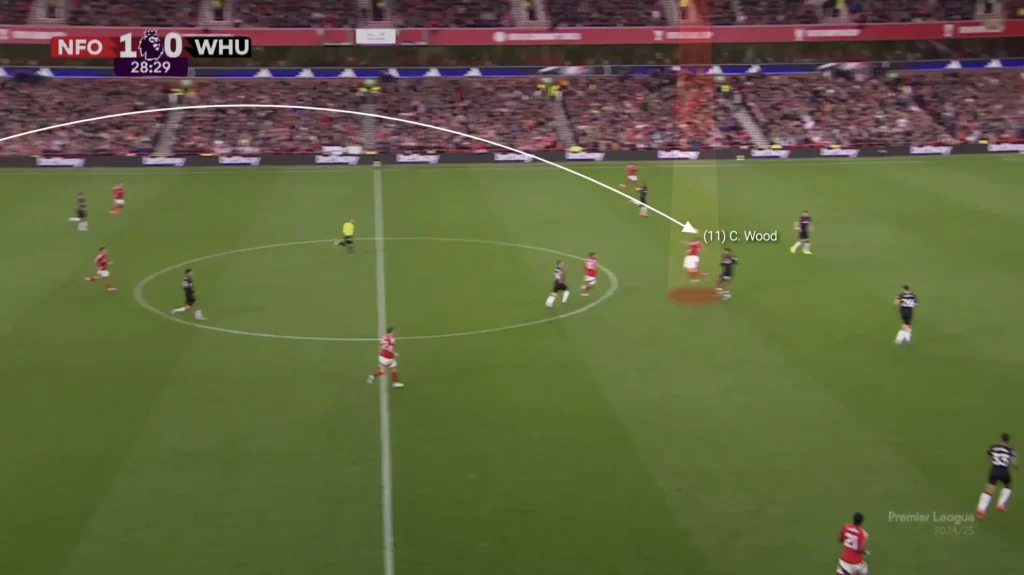
Scouting tip: Track duel success rates, but also watch how the striker uses their body. Do they create separation and protect the ball effectively, or do they lose possession under pressure?
Conclusion: Scouting Strikers in the Modern Game
Strikers remain the decisive players in football, but their evaluation must go deeper than goals alone. The modern game demands that they press intelligently, score efficiently, contribute to build-up, stretch defenses, and hold up play when required.
Ultimately, effective scouting means matching these competencies to the tactical needs of the team. A striker excelling as a secondary runner in a front two may fail as a lone forward in a possession-heavy side. Conversely, a physically dominant target man may be wasted in a counter-attacking system that relies on depth runs.
The task for scouts, coaches, and analysts is not simply to find “a striker,” but to find the right striker for the game model, system, and squad context. By systematically evaluating pressing ability, goal scoring, ball-playing, running in behind, and target-man play, decision-makers can ensure that their forward line is equipped not just to score goals—but to elevate the team’s entire tactical identity.
